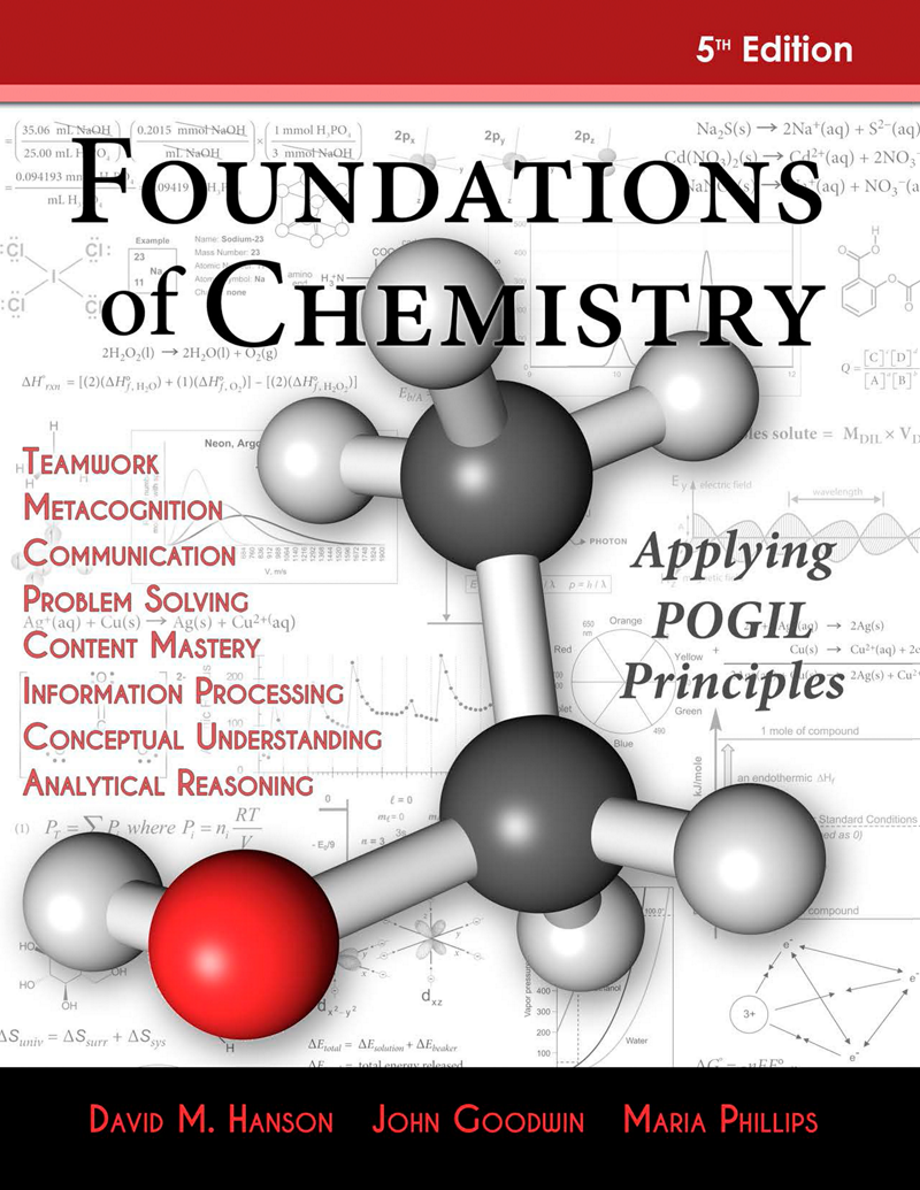Foundations of Chemistry, 5th Edition
There are SO MANY updates in this new edition, including:
- Two new activities
- A full index and list of models
- Many new Exercises & Problems (for nearly all of the activities)
- The activity order in this edition has been changed to more closely suit most first-year general chemistry courses
- A companion website offering explanatory videos, links to reliable chemistry resources, and useful touches such as flash cards
Review for the 4th edition:
"Each activity is a stand-alone exercise that explores one major topic, and is designed to be used in a small-group setting in the POGIL manner. The activities use a structure that will be familiar to anyone that has used POGIL: first some information is presented in a model, which can come in a wide range of styles, from simple text or tables to diagrams and procedures. The model is followed by a set of “key questions” that can be answered by exploring the model. As Hanson says in his introduction: “These [key] questions guide the learner in discovering the relevant concepts and in developing an understanding of them.” After this exploration, students (in their small groups) go on to do simple “exercises” that allow them to apply their new knowledge and gain confidence. Many of the activities conclude with one or more “problems”; these are more complex and require the synthesis of ideas, transference of learning to new contexts, or more in-depth problem solving. ... In summary, I found Foundations of Chemistry—Applying POGIL Principles, 4th edition by David Hanson to be useful as an add-on supplement to guide POGIL activities in the general chemistry classroom."
Read more at: https://pubs.acs.org/doi/10.1021/ed200385b
Instructors are supported through a secure Instructor's Resources web site that includes access to all activities in the instructor edition. Please note that we are happy to grant access to the Instructor Resources for instructors who formally adopt the use of this text in their classrooms. Purchase of a single copy of the book does NOT qualify for access; we must either receive an order from your campus bookstore or make arrangements for your students to purchase the book directly from our website). Please contact us if you have any questions or to request access as an adopting instructor.
500 pages, 22 Chapters, 68 Activities
|
|
For high schools wishing to use Foundations of Chemistry, we offer a High School Site License. This License allows for instructor access to both the student and instructor editions of the book (in electronic format), with full permission to print and distribute activities from the student edition. The HS Site License is good for 3 full academic years. Upon purchase, you will receive a User ID, Password, and instructions for access. We will mail you a Site License Agreement that you should sign and return.
























